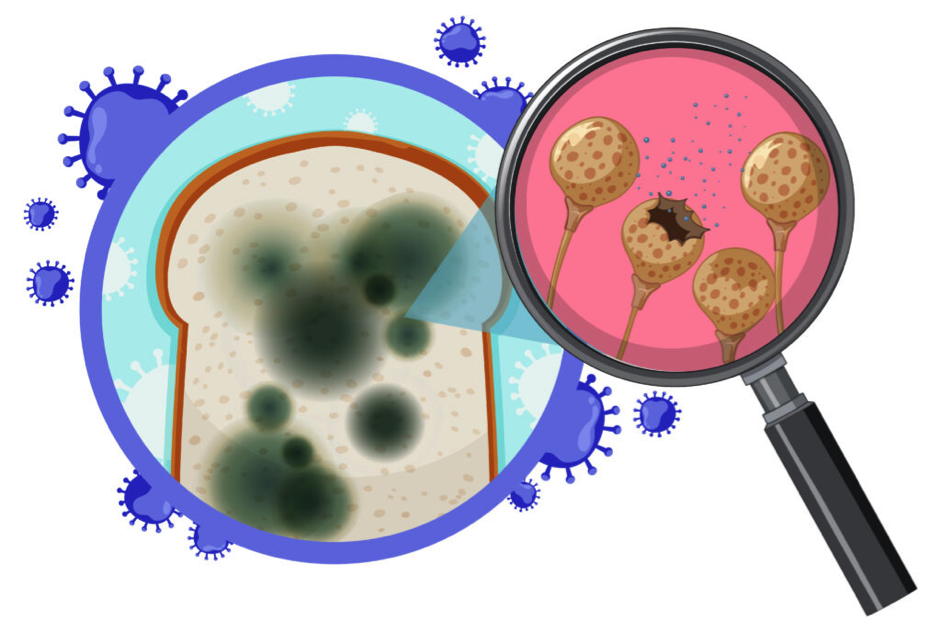
Your Health Magazine
4201 Northview Drive
Suite #102
Bowie, MD 20716
301-805-6805

More Allergy, Asthma & Infectious Disease Articles
How Salmonella Infections Happen and How to Avoid Them

Salmonella is one of the most common causes of foodborne illness in the world. In the United States alone, the Centers for Disease Control and Prevention (CDC) estimates that Salmonella causes about 1.35 million infections, 26,500 hospitalizations, and 420 deaths each year.
This bacterium hides in everyday foods and can make anyone sick if the proper precautions are not taken. Knowing how it spreads and how to prevent it can help protect you and your loved ones from its unpleasant — and sometimes dangerous — effects.
In some cases, infections can lead to legal action, such as a Salmonella lawsuit, especially when outbreaks come from contaminated food products or poor safety standards.
What is Salmonella?
Salmonella is a group of bacteria that live in the intestines of humans and animals. People usually get sick when they eat or drink something unsafe or contaminated.
Symptoms often include diarrhea, fever, stomach cramps, and dehydration. While most people recover within a week, the infection can be severe or even life-threatening for children, older adults, pregnant individuals, and those with weak immune systems.
How Salmonella Infections Happen
1. Contaminated Food Sources
Many Salmonella infections start with food. Raw or undercooked meat, poultry, and seafood are familiar sources. Raw eggs and foods made with them, such as homemade mayonnaise or cookie dough, also carry risk. Unpasteurized milk, cheese, and juices can contain bacteria.
Even fruits and vegetables can become contaminated if they come into contact with dirty water or surfaces during farming, transport, or preparation.
2. Cross-Contamination
Bacteria can spread from one food to another when they touch the same surfaces or utensils.
For example, cutting raw chicken on a board and then slicing vegetables on the same board without washing it can transfer Salmonella to the produce.
3. Poor Hygiene Practices
Not washing hands after using the bathroom, touching animals, or handling raw meat is another way the bacteria spreads.
People can also pass it to others through physical contact if their hands are contaminated.
4. Environmental Factors
Contaminated water supplies can be a source of Salmonella, especially in places with poor sanitation.
Some animals — like reptiles, amphibians, and birds — naturally carry the bacteria, and touching them without washing hands can lead to infection.
How to Avoid Salmonella
To avoid Salmonella, you should follow these habits:
1. Safe Food Handling
Cooking food to safe internal temperatures kills Salmonella. Meat, poultry, seafood, and eggs should be cooked until they are no longer raw inside.
Avoid eating raw eggs or products made from them. Use separate cutting boards for raw meat and fresh produce to prevent cross-contamination.
2. Proper Storage
Keep perishable foods in the refrigerator at 40°F (4°C) or colder. Refrigerate leftovers within two hours. In hot weather, do this within one hour. Avoid leaving cooked or raw food out for long periods.
3. Good Hygiene
Wash your hands thoroughly with soap and water before and after preparing food, after using the bathroom, and after handling pets. Clean kitchen surfaces, knives, and cutting boards with hot, soapy water after each use.
4. Safe Food Choices
Skip unpasteurized milk, cheese, and juice, as these may carry harmful bacteria. Wash fruits and vegetables under running water before eating. Peeling or cooking produce can also reduce the risk of contamination.
5. Animal Contact Precautions
Wash your hands well after touching reptiles, birds, or their habitats. Keep pets away from kitchen counters and food preparation areas.
When to Seek Medical Help
Most Salmonella infections go away on their own within a week, but medical care is essential when symptoms are severe.
High fever, persistent vomiting, bloody diarrhea, and signs of dehydration — such as dizziness, dry mouth, and little or no urination — should be taken seriously.
People at higher risk, including young children, pregnant individuals, and those with weakened immune systems, should seek medical help sooner rather than later.
Key Takeaways
- Salmonella causes millions of illnesses each year, but many of these can be prevented.
- Contaminated food, cross-contamination, and poor hygiene are the leading causes.
- Cooking food well, storing it properly, and washing hands can significantly reduce the risk of foodborne illness.
- Avoid unpasteurized dairy, raw eggs, and unsafe water sources.
- Seek medical help if symptoms are severe or persistent.
Salmonella is common but preventable. With careful food handling, proper hygiene, and smart choices in what you eat and how you prepare it, you can lower the risk of infection. Staying aware of how it spreads is the first step toward staying safe.
Other Articles You May Find of Interest...
- Are Fever and Headaches Linked to Serious Health Issues?
- Natural Remedies for Allergy Relief: Discover Effective Herbs to Alleviate Symptoms
- Amoxicillin and Its Role in Treating Kidney and Bladder Infections
- When Should You Be Concerned About Allergy Shot Reactions?
- Can Allergies Lead to Shortness of Breath? Discover the Connection
- High Neutrophil Count Explained: What It Means for Your Health
- Natural Remedies to Alleviate Respiratory Issues and Boost Lung Health














